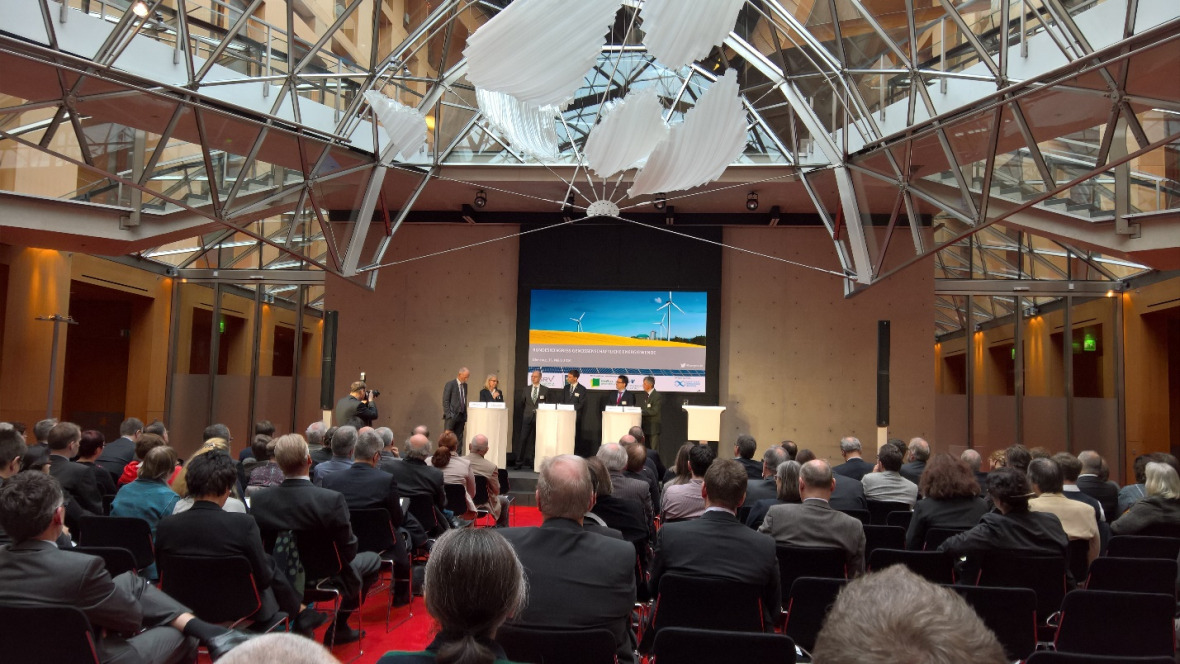Headline:
Renewable Energy Act: Switch from feed-in tariffs to auctions marginalises energy cooperatives

With the adoption of the Renewable Energy Act (2014), Germany prepared the ground for the replacement of feed-in tariffs (FiTs), which provided grid operators with a set fee for every kilowatt-hour of wind energy or solar power, to an auction-based system in accordance with the requirements of the European Commission. This system has been tested in a series of pilot auctions for solar (PV) parks. It is a mechanism with which Germany has no experience and which has on occasion performed poorly abroad as a result of inadequate planning and implementation.
The Federal Government now hopes to reform the Renewable Energy Act before the summer break and to expand the scope of the pilot scheme to include wind power. It’s not hard to understand why the German government is happy about its pilot auctions. Within twelve months, the price has fallen from 9.2 cents to 7.4 cents/kWh. It is worth noting, however, that prices would also have come down to a similar extent with feed-in tariffs.

Assuming the government’s target of 2.5–2.6 gigawatts (GW) of new installed PV capacity annually were met, FiTs for this array size would fall to 7.6 cents by April 2018 – the deadline for completion of winning bids from the last round of auctions (24 months). The difference in price is thus not that great (see the overlap in the graph). But there is a huge difference elsewhere.
In 2015, just 1.4 gigawatts of PV capacity were installed in Germany – well under the target capacity of 2.5 GW. But instead of adding more PV capacity to close the gap, less is being auctioned: 500 MW in 2015, 400 MW this year, and 300 MW next year.
When State Secretary Rainer Baake (Federal Ministry for Economic Affairs and Energy – BMWi) praises the auctions for successfully producing “intense competition,” he fails to mention that most bidders lose out in these auctions. In the fourth round, 540 MW of offers were tendered, but just 128 MW of capacity will actually be built. So far the auction system has produced far more losers than winners. The losing bids alone would easily close the gap to 2.5 GW.
At the annual conference of the DGRV (the German umbrella organisation for cooperatives) several weeks ago in Berlin, representatives of the BMWi and energy cooperatives found themselves talking at cross purposes. Baake reminded participants that cooperatives operating outside the energy sector do business without fixed prices all the time. While this may be true, his argument did not assuage the concerns of cooperatives, which are not troubled at the prospect of competing on price, but are reluctant to invest time and money in submitting bids that are unlikely to be successful.

In their defence, the government and the Federal Network Agency point out that cooperatives and community energy projects have won bids under the pilot scheme. In the fourth round, a full ten of the 21 winning bids were awarded to business types (KGs and GmbH & Co. KGs) commonly used by community-owned projects. Clearly, policymakers are genuinely concerned about this issue. But the fact remains: Baake’s call for more cooperatives to place bids will only result in more losers unless the BMWi raises the volume for auctions. In the fourth round, 77 per cent of bidders lost, and the 312 MW not eligible for compensation is almost exactly the amount needed per quarter to close the gap towards 2.5 GW of newly installed capacity.
What’s more, these figures do not reflect the large number of projects shelved by energy cooperatives unwilling to submit bids under the auction system. The magic of FiTs was that as long as the numbers stacked up, developers could move ahead; on the flip side, growth in renewables could not be controlled. There is, undoubtedly, a need for closer governance of this sector. But the German government has signed on to COP21, and the goal of keeping global warming well below 1.5 °C means it’s time to fast-track the energy transition. Slowing growth in the domestic renewable sector will not be conducive to achieving this ambitious goal.

When auctions replace FiTs in the wind sector, community-owned projects are likely to be marginalised there too. A number of German states are now calling for regulators to minimise the risk exposure of cooperatives by allowing them to participate in auctions as non-competitors (PDF), a change that would compensate for their inability to spread losses across multiple bids.
Header image: istock/VioNet
